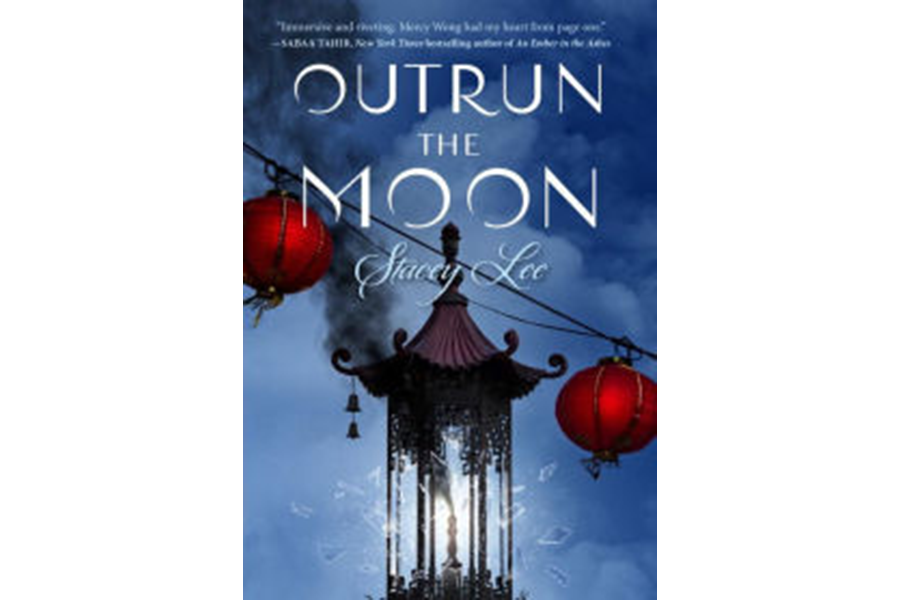'Outrun the Moon' features a stellar YA heroine set in historic Chinatown
Loading...
Another season, another crop of stellar young adult books. This summer’s first must-read is Stacey Lee’s latest YA historical fiction, Outrun the Moon.
Set in San Francisco in 1906, “Outrun the Moon” is an iron fist in a velvet book jacket. It confronts classism, racism, xenophobia, and gender bias through the spunky, funny voice of Mercy Wong, Chinatown’s most ambitious daughter.
Consider it a BOGO deal as well: two stories for the price of one, bisected by the devastating 1906 earthquake. The pre-quake half is a bootstrapping romp, calling up Horatio Alger, Gail Carson Levine’s “Ella Enchanted,” and Frances Hodgson Burnett’s “A Little Princess.” Instead of an obedience curse or spiteful stepsisters, though, Mercy faces a pack of spoiled, mincing heiresses who spit in the face of her Chinese heritage.
The post-quake half turns that bubbly story inside out. What once was the Edwardian “Paris of the West” is now an apocalyptic wasteland under martial law. Survivors cluster in camps, fighting for food and water. Hundreds or thousands are dead and a fire ravages the city. Whew. Deep breath, folks: That’s just the backdrop. The real feature is Ms. Mercy Wong herself. Mercy sees life stretching out before her in a long, pre-hewn path. Grow up in Chinatown. Get married and have babies in Chinatown. Struggle to make ends meet and look after her parents in Chinatown. And, eventually, die in Chinatown.
This sharp-eyed, entrepreneurial teenager has other ideas. Her primary objective is to bankroll a better life for her parents and baby brother, Jack. Jack has lung trouble, and Mercy knows the launderer’s life will kill him.
Her plan springs from “The Book for Business-Minded Women,” which bills itself as a philosophy more than a business guide. Mercy views its Radcliffe College-educated author, Evelyn Lowry, as a business advisor and life coach. Lowry’s key tenet is, “Your circumstances don’t determine where you can go, only your starting point.”
So, like any good logician, Mercy works backward to determine a master plan. It’s audacious, but she has the guts and gumption to make it work. Plus, her mother backs her up at every turn, encouraging her daughter’s independence and authority. Here’s the plan:
1. Convince her sweetheart, the herbalist’s son, to obtain a rare herb said to have anti-aging properties.
2. Give the herb to the wife of the board president of an elite private school, in exchange for a meeting with her husband.
3. Convince him through crafty negotiation (and perhaps a skosh of bribery) to admit her to the St. Clare’s School for Girls. As Mercy is poor and Chinese, this step is the toughest.
4. Attend St. Clare’s and receive a top-flight education in business and economics.
5. Become a business magnate and make lots of money.
6. Buy her family’s ticket to a better life.
She gets all the way to Step 4 when the earthquake hits. The school is destroyed, her mother and Jack are killed in the fire, and Mercy’s scheme disintegrates.
In the free-for-all that follows, the girls of St. Clare’s must fend for themselves. What will happen to our scrappy teen entrepreneur and her ragtag jumble of displaced heiresses?
It’s hard to overstate the historical heft of “Outrun the Moon.” Stacey Lee spares no detail in recounting the Chinese experience in turn-of-the-century California, a subject not always covered in history books. Mercy’s Chinatown is a tight-knit, insular community besieged by anti-Chinese legislation and sentiment.
Lee explains her personal connection to the topic: “My mother was a native San Franciscan whose family grew up in SF Chinatown. She knew people who were displaced after the earthquake, and I always thought it would be interesting to learn what life would’ve been like for a Chinese girl during this calamity, when the rules that governed the unofficial division of people into distinct neighborhoods, no longer applied.”
After I finished “Outrun the Moon,” it took me two weeks to realize the extent of Lee’s book-ception. In a twist on par with Möbius or Escher, “The Book for Business-Minded Women” describes not only Mrs. Lowry’s book, but Lee’s as well. Mercy Wong comports herself as an executive from the start and regardless of circumstance.
At any moment, our heroine exemplifies:
Moxie. Mercy has unwavering confidence in her abilities. The first two sentences of the book tell you all you need to know: “In my fifteen years, I have stuck my arm into a vat of slithering eels, climbed all the major hills of San Francisco, and tiptoed over the graves of a hundred souls. Today, I will walk on air.”
Risk-taking. She’s unafraid of failure and determined to learn from mistakes. When she’s caught sneaking out to visit her sweetheart, she accepts the punishment and moves on.
Resilience. Someone who loses her family, her career prospects, and her home in the same day, but adapts and resolves to succeed anyway, is a strong woman indeed.
Discipline. Mercy’s command of strategy and logic is fierce. Remember that exhaustive six-step plan? That’s some grade-A “first principles” thinking.
Compassion. Among other things, Mercy rallies her classmates to form a soup kitchen for survivors in the Golden Gate Park encampment.
In the age of Lean In, Ban Bossy, and A Mighty Girl, “Outrun the Moon” is bound to resonate.
Lee, a member of the #weneeddiversebooks campaign, has said: “I never write with an agenda. I try to focus on an individual’s story, which, if I’ve done my job right, shows the complexity of the human condition in the context of a particular time period. I try to let the reader arrive at their conclusions about justice/bias based on the narrative I’ve drawn.”
"Outrun the Moon” is a natural fit for book clubs, libraries, and your own bookshelves. Put it on your summer reading list today!






